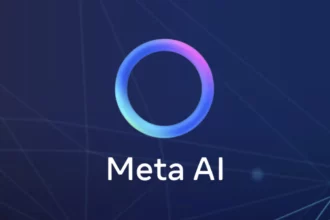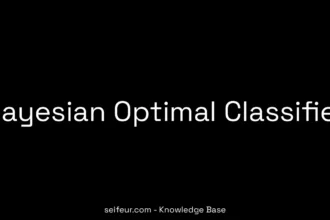Welcome to seifeur.com, where we unravel the mysteries of the BLEU Score in Python! If you’ve ever wondered how to measure the quality of machine-generated translations or language generation models, then you’re in the right place. In this blog post, we’ll dive into the fascinating world of the BLEU Score, demystify its inner workings, and show you how to calculate it using Python. So, whether you’re a language enthusiast, a data scientist, or just curious about how computers understand language, get ready to embark on a journey that will leave you BLEU away!
Table of Contents
ToggleUnderstanding the BLEU Score in Python
In the rich tapestry of Natural Language Processing (NLP), the BLEU score shines as a beacon for quantifying the elegance of machine-generated text. It stands tall as the Bilingual Evaluation Understudy, meticulously crafted to measure the caliber of text output. The BLEU score is the compass that navigators in the realm of NLP rely on, guiding them through the murky waters of text evaluation, especially for systems that produce textual content such as image summarization tools, question-answering systems, and chatbots.
Imagine the BLEU score as an impartial judge at a poetry contest, where machines, instead of humans, submit their verses. This metric listens to the symphony of words from machine-generated poetry, compares it to verses penned by human poets (the reference texts), and scores the machines on how well they mimic the human touch.
| Fact | Explanation |
|---|---|
| BLEU Score in NLP | A quantitative metric for evaluating the quality of machine-generated text against multiple human-crafted reference texts. |
| BLEU Score Usage | Essential for gauging the performance of NLP systems that output text, including summarization tools and chatbots. |
| Calculating BLEU in Python | Utilizes the NLTK library’s sentence_bleu() function to compare candidate sentences against reference texts. |
| Interpreting BLEU Scores | A higher BLEU score indicates closer resemblance to the quality of human references, whereas a lower score suggests a divergence. |
Aspiring to grasp the intricacies of the BLEU score, Python enthusiasts often turn to the acclaimed NLTK (Natural Language Toolkit) module. This toolkit, a treasure trove for linguists and programmers alike, provides the sentence_bleu() function, a powerful spell that brings forth the BLEU score by scrutinizing the candidate sentence against the revered reference sentences.
The essence of BLEU’s magic lies in its ability to offer a score between 0 and 1. Achieving the zenith of 1 is a testament to a perfect mirroring of the reference, a rare feat akin to catching a glimpse of a unicorn in the wild. It’s a moment of triumph, where the machine’s utterance is indistinguishable from that of a human’s.
With this foundational knowledge, we embark on a journey to further decipher how the BLEU score is calculated and interpreted, all within the Python ecosystem. Each step forward brings us closer to mastering the art of evaluating machine-generated text, ensuring that our creations resonate with human readers, just as a masterful poem resonates with its audience.
How the BLEU Score Works
Imagine a bridge connecting two islands: one represents the human-like fluency we desire in machine-generated text, and the other embodies the actual output from a language processing system. The BLEU score serves as a quantifiable measure of how well this bridge is constructed—how closely the text output by machine approaches the quality of a human translator or author.
At its core, the BLEU score is a reflection of textual harmony. It employs a clever technique to compare a candidate sentence—the text produced by a machine translation or language model, for instance—against reference sentences—the gold standard crafted by human hands. This comparison isn’t just a superficial glance; instead, it delves deep into the linguistic structure of the text by examining n-grams, which are sequences of ‘n’ words in a row.
For example, in the phrase “the quick brown fox”, “the quick” is a 2-gram, while “the quick brown” is a 3-gram. The BLEU score algorithm computes the precision of these n-grams between the candidate and reference sentences. A score of 1 signifies that the candidate text is virtually indistinguishable from a reference text, epitomizing the pinnacle of machine-generated text quality.
However, this metric is not just about counting exact word matches. It acknowledges the complexity of language by incorporating a smoothing function to address the issue of the candidate sentence having n-grams that do not appear in the reference. Moreover, to prevent overly short or awkwardly concise machine translations from scoring unfairly high, the BLEU score includes a brevity penalty. This ensures that a candidate sentence cannot achieve a high score simply by being short and matching a few key words; it must also match the reference sentences in length and fluency.
The brilliance of BLEU lies in its simplicity and its ability to offer a quick, albeit approximate, gauge of text quality that correlates with human judgment. This has made it a cornerstone in the field of Natural Language Processing (NLP), where it is used to refine and assess the performance of models that generate human-like text, such as chatbots, summarization tools, and translation services.
By using the BLEU score, developers and researchers can iterate on their language models with a quantifiable goal in mind, striving to bridge the gap between machine efficiency and the artistry of human language. As we continue to explore the capabilities of artificial intelligence in understanding and replicating human communication, metrics like the BLEU score play a pivotal role in guiding our progress and ensuring that the final output resonates with the essence of human touch.
Interpreting the BLEU Score
When we peel back the layers of language, we uncover the rich tapestry of human thought and expression. In the realm of machine translation, the BLEU score serves as a quantifiable measure, a beacon guiding us through the foggy intersection where technology meets linguistics. As our digital scribes endeavor to replicate the nuances of human language, the BLEU score offers a lens through which we can gauge their success. But how do we interpret these numerical whispers?
Imagine a spectrum where numbers translate to meaning. A BLEU score ranging from 30 to 40 could be likened to a traveler with a modest grasp of a foreign tongue – the translations are understandable and generally good, but perhaps lack the eloquence of a native speaker. This range reflects a basic coherence and suggests that the machine has captured the gist of the source material.
Ascending the scale, scores between 40 and 50 signify translations of high quality. Here, the machine has not only grasped the basic structure but has also started to finesse the subtleties of the language. At this juncture, translations often appear more polished and are usually well-received by the target audience.
Further up the ladder, in the lofty heights between 50 and 60, we encounter translations that are very high quality, demonstrating both adequacy and fluency. These translations flow smoothly, capturing not just the literal meaning but also the style and tone of the original text. It is here that the machine’s output begins to rival the fluidity of human translators, offering a testament to the strides made in computational linguistics.
At the pinnacle, a BLEU score greater than 60 is a rare gem, often suggesting a quality that surpasses human translation. Such a score might imply that the algorithm has achieved a deeper understanding of the text, perhaps even mirroring the precision and creativity of a seasoned linguist. However, as we revel in these impressive figures, we must tread carefully; a score this high can be a double-edged sword, possibly hinting at overfitting or measurement errors.
In the dance of digits and dialogue, the BLEU score is but one step in the choreography. It is a tool to help us edge closer to the dream of breaking down language barriers, enabling our digital counterparts to interpret the world’s narratives with the grace and agility of human touch.
As we continue to navigate the intricate world of machine translation, it’s essential to remember that while the BLEU score is a valuable indicator, it is not the sole arbiter of translation quality. The true essence of language lies in its ability to evoke emotion, convey nuance, and forge connections – feats that are still best measured in the hearts and minds of human readers.
Calculating the BLEU Score
In the intricate dance of words and meanings that is machine translation, the BLEU score steps in as a meticulous judge, ensuring the rhythm of the algorithm matches the elegance of human language. This metric, a beacon in the vast sea of computational linguistics, offers a quantifiable measure of translation quality by focusing on the precision of word choice and sentence construction in the target language.
Imagine you are crafting a mosaic, each tile a word from a palette of languages. The BLEU score helps determine how well your mosaic mirrors the original image—a reference translation. The calculation begins with the smallest fragments, the n-grams. These are sequences of words, ranging from one (unigrams) to four (tetragrams), that the algorithm compares between the machine-generated text and the reference.
To compute the BLEU score, you embark on a step-by-step journey:
- Counting Matches: Tally the number of n-grams in the translated text that find their counterparts in the reference.
- Normalization: Adjust these counts to avoid overestimation by dividing by the total number of n-grams in the machine-translated output.
- Modified Precision: With precision scores for each n-gram order, we now have a nuanced view of the translation’s lexical accuracy.
- Geometric Mean: The geometric average of these precision scores is like striking a chord that resonates with the harmony of the source and target texts.
- Brevity Penalty (BP): This step ensures the translation’s length aligns with the reference, preventing unduly terse translations from skewing the results.
Finally, we unite the geometric mean with the Brevity Penalty in a mathematical embrace to produce the final BLEU score. Typically, we set N to 4, considering unigrams to tetragrams to render a comprehensive assessment. This metric, although not perfect, offers a glimpse into the translation’s fidelity and fluency—attributes that echo the nuanced, human aspects of language.
As we move forward, we’ll delve into how to wield the power of Python to calculate the BLEU score, harnessing its computational might to distill the essence of translation quality into a single, interpretable figure.
Calculating the BLEU Score in Python
Embarking on the journey of machine translation evaluation, Python emerges as a beacon of hope. It offers the NLTK module, a treasure trove for computational linguistics. Within its expansive toolkit resides the sentence_bleu() function, a tool designed to weave through the complexities of language with elegance and precision.
To harness the power of sentence_bleu(), one simply provides the reference sentences as the gold standard and the candidate sentence as the aspirant. This function then meticulously compares the candidate with the references, seeking harmony in the form of matching words and phrases. It’s akin to a dance of words where each step is an n-gram, and the synchronization with the reference text is paramount.
Imagine a puzzle where each piece is a word from your translated sentence. The reference sentences are like the picture on the puzzle box; they show what the final image should look like. The sentence_bleu() function tries to fit your pieces into this picture to see how well they match. The closer your assembled puzzle resembles the picture on the box, the higher your BLEU score will be.
Alternatives to the BLEU Score
While the BLEU score is indeed a luminary in the realm of translation assessment, it is not without its challengers. Among them, the METEOR metric shines brightly. It does not merely count the matching words but also revels in the subtle artistry of language. By considering synonyms, stemming, and even the order of words, METEOR provides a more nuanced and holistic measure of the translated text’s fidelity and fluency.
Thus, while the BLEU score serves as a reliable compass, the METEOR metric is like a map that accounts for the diverse terrain of linguistic expression. It is a testament to the ceaseless pursuit of perfection in the field of natural language processing, pushing the boundaries of how we understand and evaluate the intricate tapestry of human language.
Conclusion
The quest for excellence in machine translation is akin to an alchemist’s pursuit of turning lead into gold. In this transformative journey, the BLEU score emerges as a vital alchemical tool, offering insights into the refinement process of machine-generated text. It’s a beacon that guides developers and linguists alike towards the elusive goal of perfect translation.
As we delve into the realm of Natural Language Processing (NLP), the BLEU score stands tall as a quantitative touchstone. Its ability to compare machine-produced content with that of human-crafted reference texts is nothing short of magical. It’s not just a number—it’s a mirror reflecting the nuanced intricacies of language that your system has managed to capture—or missed.
Imagine you’re sculpting a chatbot, one conversational snippet at a time, or you’re weaving a narrative through an image summarization tool. Perhaps you’re architecting a question-answering system that holds the promise of near-human interaction. The BLEU score is your faithful scribe, meticulously recording the fidelity of your creation to the richness of human language.
And yet, this metric is not without its limitations. Just as a single spice does not make a feast, the BLEU score alone cannot encapsulate the full flavor of linguistic accuracy and fluency. This is where its alternative, METEOR, enters the stage, bringing along its repertoire of synonyms, stemming, and sensitivity to word order.
Whether you’re a seasoned NLP practitioner or a curious novice, understanding and utilizing the BLEU score can significantly elevate the quality of machine translation. It’s a compass that helps you navigate through the vast sea of language, ensuring your systems don’t just speak but resonate with human-like eloquence.
As we continue to unravel the tapestry of language with technology, metrics like BLEU and METEOR are indispensable in our toolkit. They are not the final destination but rather milestones, marking our progress in the ongoing odyssey of machine understanding and linguistic mastery.
Let’s embrace these metrics as we forge ahead, continually striving for that perfect symphony of words—a translation so seamless that it becomes indistinguishable from the artistry of human expression.
Q: How do you find the BLEU score in Python?
A: To find the BLEU score in Python, you can use the NLTK module which provides the sentence_bleu() function. This function allows you to pass the reference sentences and a candidate sentence, and it will check the candidate sentence against the reference sentences.
Q: What is a good BLEU score? How should it be interpreted?
A: A good BLEU score is a value closer to 1, which indicates that the candidate text is more similar to the reference texts. The BLEU score is a quantitative metric for measuring the quality of an output text based on multiple reference texts.
Q: Why is the score of BLEU more than 1?
A: The score of BLEU is always a number between 0 and 1. This value represents how similar the candidate text is to the reference texts. A score higher than 1 is not possible as it would indicate a higher similarity than perfect similarity, which is not feasible.
Q: What is the BLEU score in NLP and why is it needed?
A: The BLEU score, which stands for Bilingual Evaluation Understudy, is a quantitative metric used in Natural Language Processing (NLP) tasks to measure the quality of an output text based on multiple reference texts. It helps in estimating the performance of systems with textual output, such as image summarization tools, question-answering systems, and chatbots.
Q: What are the disadvantages of the BLEU score?
A: One major disadvantage of the BLEU score is that it has a blind spot. Even if a sentence is translated correctly, it can still receive a low score depending on the human reference. Additionally, BLEU cannot evaluate the importance of errors. For a BLEU score, an error is simply considered as an error without considering its significance.





